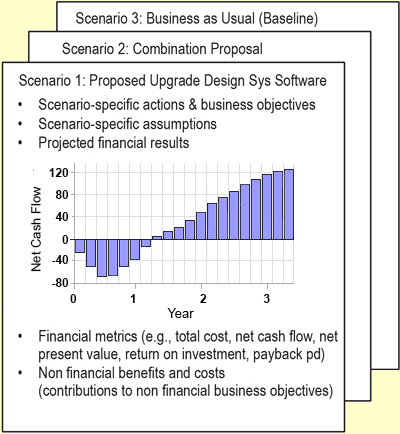Sometimes, the most critical enterprise integration challenges are cultural and political, not technological. Many IT executives can easily identify business drivers behind specific current or desired initiatives. However, some encounter varying, sometimes significant objections to those initiatives. IT executives therefore frequently request assistance from us in 'marketing' and 'selling' initiatives internally in consistently effective ways. Below are some specific recommendations based on best practices that are working at numerous companies. Marketing and sales skills may seem at first irrelevant to IT executives.
However, many such executives are at enterprises where IT budgets are flat, growing by only 1 to 2 percent annually, or shrinking. Also, IT executives frequently face what is effectively competition from outsourcing. In addition, IT initiatives are often perceived by those outside of IT as large expenditures with little demonstrable business benefit, if any. To succeed under such conditions, RFG recommends that IT executives learn and adapt effective marketing and sales techniques.

Business drivers are the people, information, and tasks that support the fulfillment of a business objective. Chain Management (SCM), Business Information Warehouse (BIW), Supplier Relationship Management (SRM), Human Resource Management System (HRMS) and Product Lifecycle Management. In some cases, outdated technologies can present significant problems that drive information system development projects. In other cases, newer technologies present business opportunities. Let's examine several technologies that are influencing today's information systems. >Networks and the Internet Scott McNealy, Sun.

IT executives should begin from the basic assumption that for every IT initiative, all enterprise constituents can be collected into at least one of three groups – influencers, practitioners and stakeholders. Influencers influence budgets and other factors surrounding each initiative. Practitioners include those within and beyond IT tasked with making each initiative work. Stakeholders are any and all constituents affected by each initiative and its results. IT executives should ensure that all outreach and 'promotional materials' supporting every initiative addresses the concerns and proclivities of all three groups, to maximize the likelihood of 'buy-in' and 'sign-off,' and minimize the likelihood of active or passive sabotage. To achieve these goals, IT executives should adopt a 'CPR' approach, where 'C' stands for 'culture,' 'P' for 'process,' and 'R' for 'relevant technologies,' listed in order of priority. In other words, IT executives should address all known and suspected cultural issues affecting influencers, practitioners, and stakeholders in every outreach effort.
These issues should help to shape policies, practices and procedures, including those used to assess, compare, and deploy relevant technologies. As one RFG client put it, 'culture eats process for lunch' at most enterprises. Cultural issues can range from basic 'FUD' ('fear, uncertainty, and doubt') to outright hostility between individuals or factions within and/or outside of IT. Failure to identify and address these effectively can kill an IT initiative before its proponents ever get to evaluate potentially relevant technologies.
Quick Guide: What is BPM? Quick Guide: What is Event Processing? Smart event processing can help your company run smarter and faster. This comprehensive guide helps you research the basics of complex event processing (CEP) and learn how to get started on the right foot with your CEP project using EDA, RFID, SOA, SCADA and other relevant technologies. Quick Guide: What is Enterprise 2.0? A lot of people are talking about Enterprise 2.0 as being the business application of Web 2.0 technology.
However, there's still some debate on exactly what this technology entails, how it applies to today's business models, and which components bring true value. Some use the term Enterprise 2. Madcrosoft PC TuneUp Tools 2013 V8 0 044+key By Senzati. 0 exclusively to describe the use of social networking technologies in the enterprise, while others use it to describe a web economy platform, or the technological framework behind such a platform. Still others say that Enterprise 2.0 is all of these things.
There are many business drivers in play today that are motivating companies to establish data warehouses. Current, consistent and accurate business information, they believe is critical for strategic and tactical decision making. Some of the business drivers are summarized below. Single Version of the Truth Fragmented, inconsistent and outdated data in multiple databases does not permit good strategic and tactical decision making. Companies require that business intelligence be consolidated and presented in a suitable format for decision making. Inconsistent information from disparate information systems is no longer acceptable. Data Warehouses help companies to achieve a single version of the truth by consolidating the most accurate and current data from the most reliable systems.